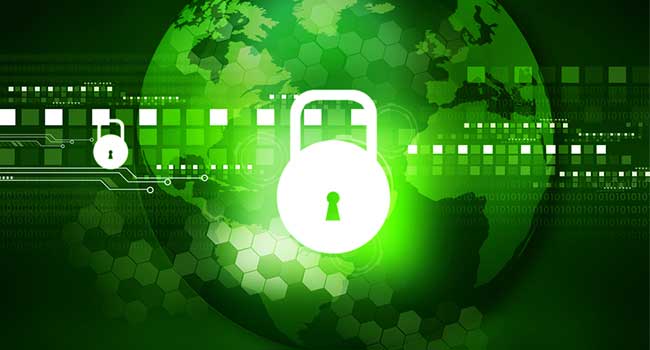
Evolving Security for Protecting Today’s Financial Services Networks
- By Kelly Ahuja
- Sep 09, 2022
Today’s businesses have seen increasing pressure to digitize their services, but few industries have felt this pressure more than the financial sector. Customers have grown to demand high-quality digital services, and the expectation is that these services are delivered with a high degree of security and reliability. To thrive in today’s competitive digital era, financial institutions must invest in the right technology to transform the underlying network that powers their essential offerings and differentiation.
While the ramifications of a cyberattack on the financial sector could be extraordinary, financial services organizations face many of the same challenges as organizations in other vertical markets. For example, with the growing challenges of adapting to a disparate workforce, financial firms need to give their remote users the flexibility, secure access and network performance needed to perform their duties. For larger companies, their distributed network needs to support many branch offices, which could be located internationally.
Financial services companies today realize that traditional perimeter-based security tools are no longer adequate to protect them from a constantly evolving threat landscape. This is especially true with the evolution of the cloud in financial services, which often involves firms leveraging multi-cloud environments. Most financial organizations increasing rely on cloud services, such as public cloud offerings including Azure, Amazon and Google, or their own private infrastructure. Cloud adoption has created new levels of adaptability and scalability, and organizations are now better equipped to manage sudden influxes from interchanges between banks to financial transactions.
There is now too large of an attack surface and too many attack vectors to secure with walls around everything. Rather than attempting to build security around the distributed network, these days the network itself must provide security. Traffic entering the network must be secured from start to finish and security and the network must operate fully integrated as one.
The Expanding Attack Landscape
Ten years ago, financial firms’ on-premises focused security personnel were able to identify network attacks very quickly, since most took place in the top-level layers of a system, often through a malware attack. These days however, vulnerabilities are exploited over long periods, with massive destruction and theft in mind. Financial companies can no longer assume that their network systems will remain safe.
Cyber thieves are also infiltrating through underlying networks, passing from router to router and accessing information located far below a system’s top level. The evolution of these attacks means that financial services firms may not be aware of a breach for long periods of time, increasing the amount of harm to the organization and its clients that can be performed.
Financial companies should update their security strategies to address worst-case scenarios and assume that at some point they will be victims of attack. This means understanding that any single employee may serve as a hacker’s entry to access company systems. Anyone can be fooled by increasingly sophisticated attacks and click on a phishing email, resulting in an opening for malicious events.
Emerging Needs for Visibility and Analytics
To address these sophisticated attacks, analytics and visibility are instrumental in strengthening a financial services company’s security posture, particularly when it comes to branch sites. Analytics and visibility deliver invaluable insights into an organization’s ongoing security status and can help identify critical vulnerabilities previously unseen. While IT leaders traditionally have focused on their organization’s connectivity and security, these days’ analytics and visibility of distributed networks are getting their fair share of attention.
The type of information this approach provides can prove vital for the rising number of companies suffering an attack. The first challenge after a breach attempt has been identified and systems have been shut down is to determine how far cyber thieves have infiltrated before being detected, and what exactly they accessed. This is particularly true in cases of ransomware, where an organization must be able to determine the criminal’s activity on its systems. Hackers may claim they accessed and encrypted five terabytes of data, but a firm may be able to see they collected only a handful of files before being shut out. Only with complete visibility will financial organizations have the information they need to counter a criminal’s claim.
How to Strengthen the Network
Financial services companies can strengthen their network architecture against attacks through a number of approaches. For example, Zero Trust Network Access (ZTNA) technologies should be a high priority for organizations to limit access to privileged accounts and data left easily accessible, particularly in the remote worker and branch environment. Requiring authentication before granting access is an important way a firm can protect its network and keep data secure.
Many financial organizations need to reassess their infrastructure foundations before additional security approaches are considered. Integration is critical for strengthening an organization’s network architecture, since many have disparate systems that would qualify for integration. Integration will not only simplify systems and their management, it will provide greater accessibility, security and flexibility. Achieving strong integration will enable firms to have greater visibility into their distributed systems, making it easier to identity and defend against incoming cyberattacks.
Cloud delivery offers firms greater flexibility, making it easy to apply security services and consistent policies remotely where they are needed. This is especially useful for larger financial organizations that have many locations of different sizes having varied requirements.
In today’s world where any organization can be a target for cyberattack, a strongly secured network architecture and end-to-end visibility are the building blocks to a resilient security posture. Enabling a single point of control will help ensure financial firms can create a more streamlined and secure network architecture, whether from the headquarters or remote branch locations. To protect private data and networks, all organizations should work toward a common goal – implementing an approach that combines the crucial elements of network architecture, security and visibility.